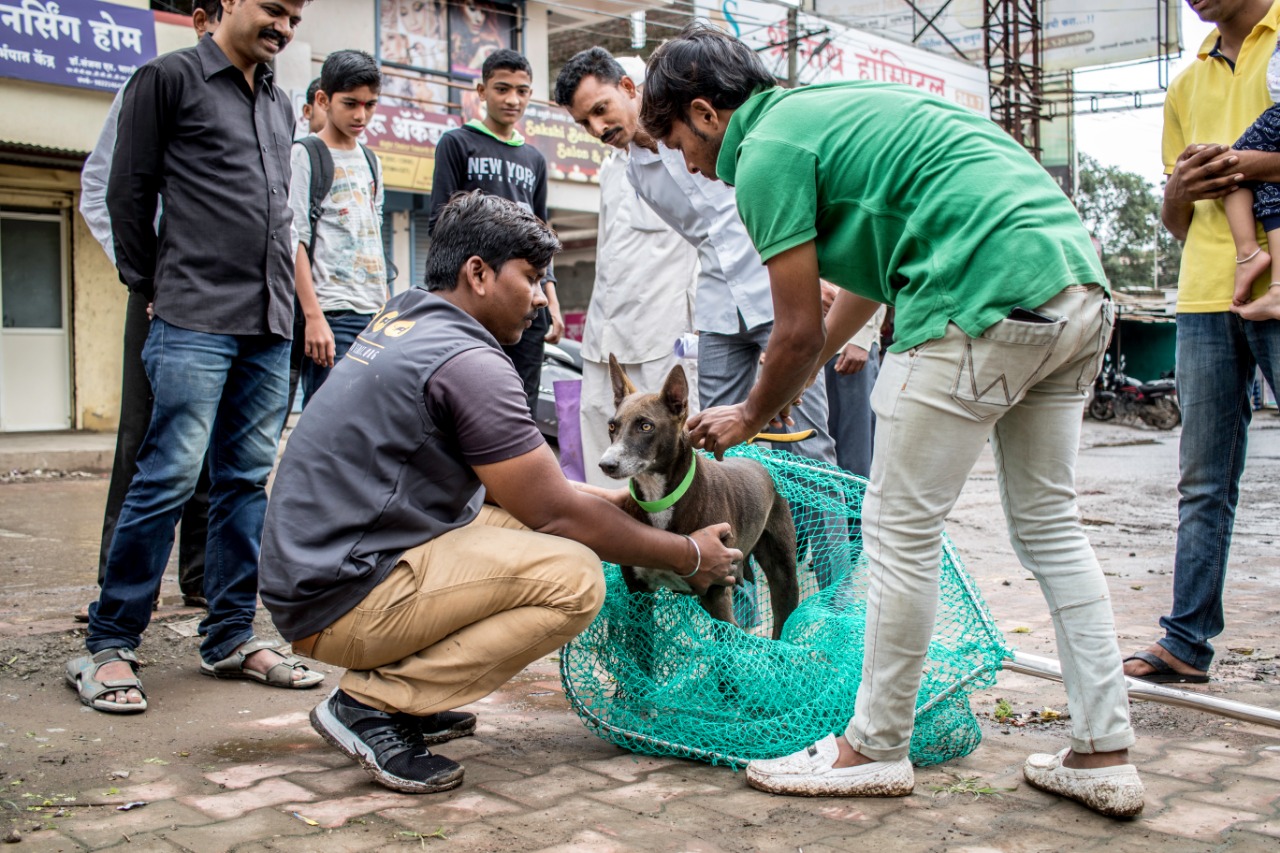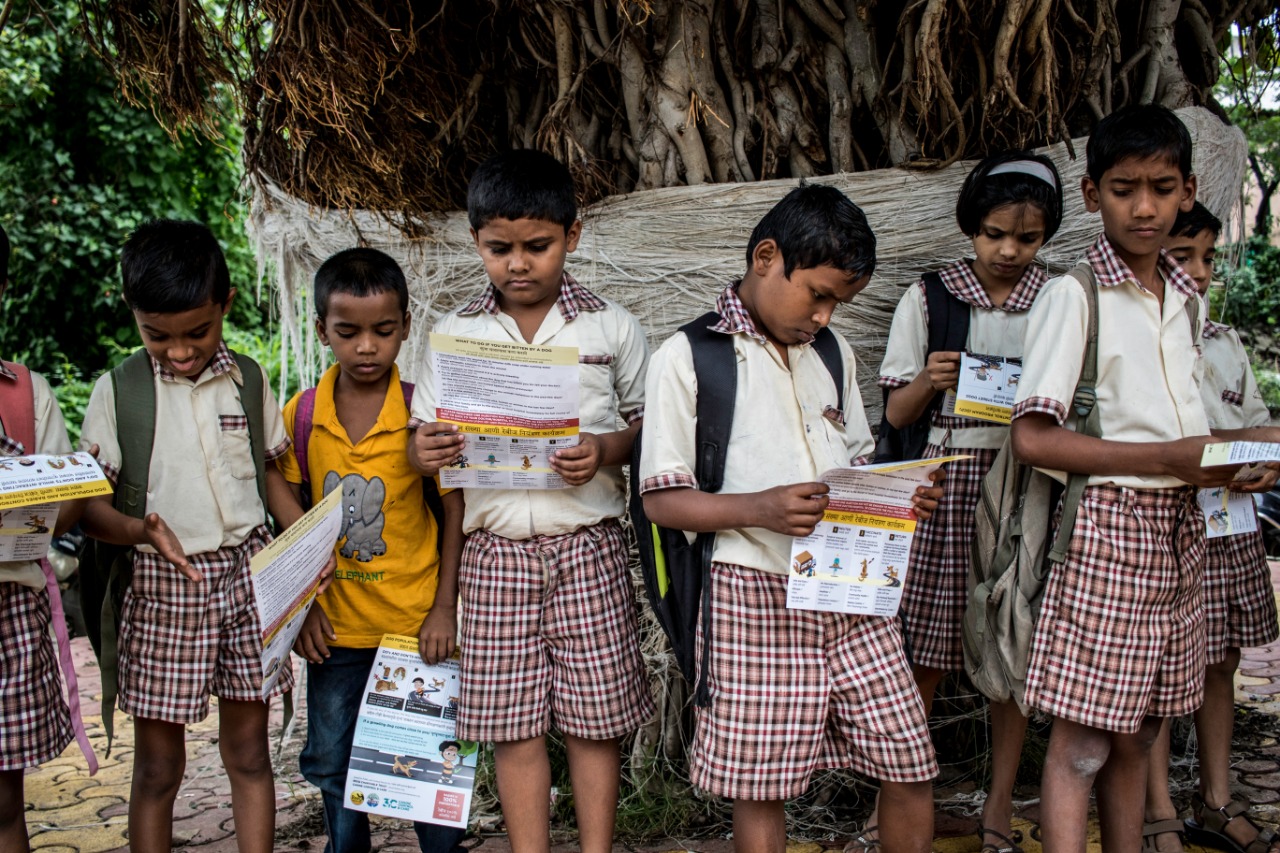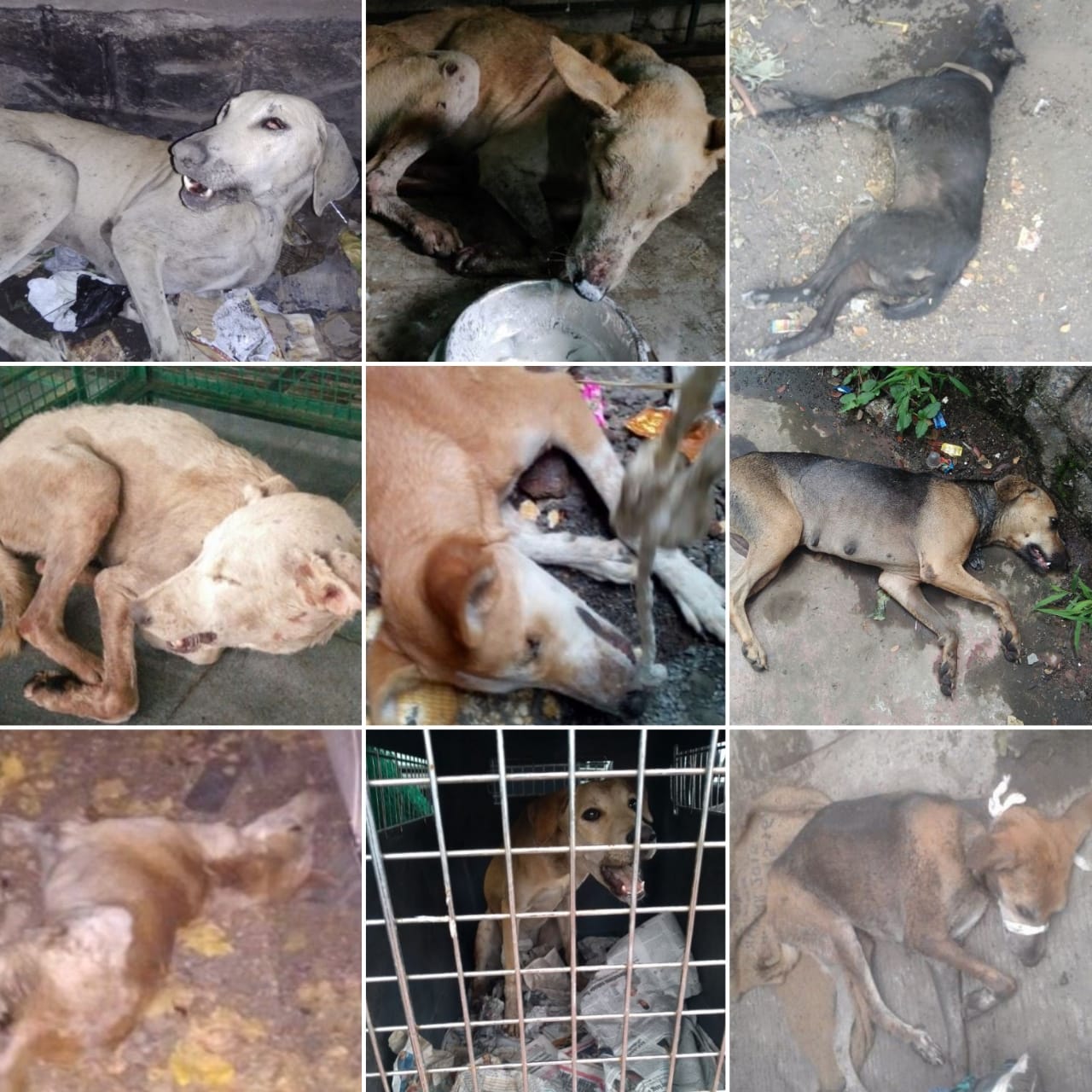Understand more about Rabies and why you must do everything in your power to get a suspected Rabid dog off the streets - especially if you are someone who interacts with street dogs!
Does not exist.
Ever so often different kinds of animal reporters to RESQ ask us these very difficult-yet-simple questions when they are told that the animal they have brought in or reported is suspected to have Rabies. ['Reporters' in this case are general members of the public or animal rescue volunteers who report on our animal helpline/ webline or bring an animal to our organisation's facility in Pune i.e. the RESQ Centre in Bavdhan, whose one section is dedicated to Maharashtra's only Canine Rabies Unit i.e Rabies Response Team, Quarantine, Testing and Research Facility]
Below mentioned are the kind of reporters and their questions to our RESQ veterinarians and team members:
The concerned-yet-uninformed reporter - "Can you please cure this dog of Rabies?"
The agitated-and-uninformed reporter - "What do you mean there is no treatment for Rabies?!"
The hostile-self-entitled-unwilling-to-listen and uninformed reporter - "You're just going to kill the dog! It is only a virus, how can you not have a cure for Rabies you ****** NGO!? Aren't you going to give it any treatment to try even, are you'll just going to let it die?!"
Before I explain WHY RESQ decided to have a Rabies Unit, it's imperative to understand Rabies as a disease and I shall attempt explaining it in the simplest way possible.
What is Canine Rabies?
Disease - Rabies is zoonotic disease i.e. a zoonotic disease is one that can get transmitted from animals to humans.
Fatality - Rabies has one of the highest fatality rates in all infectious diseases. If a human starts showing symptoms - there is a 99.9% chance of him or her dying of it.
Carriers - Dogs are considered to be the most common carriers of the virus. 99% of human deaths caused by Rabies have been traced to dogs as the transmitters or reservoirs.
Transmission - The Rabies virus is transmitted by the saliva of a rabid animal only when it enters another body (any other mammal - animal or human) via direct exposure of the rabies-laden-saliva onto a mucosal surface or into a wound. A wound can be a scratch or nick or a deep bite, anything where the skin-blood barrier is broken.
What happens to a dog when it contracts Rabies?
The Rabies virus may affect the brain and/or spinal cord once it is contracted. Once the virus reaches the brain (via the blood), it replicates and that's about when symptoms start showing in the patient, whether it is a human or a dog. Symptoms are seen generally/ clinical present themselves in two types of forms:
Furious (classical or encephalitic) form - When a dog displays this form of Rabies, one sees a myriad of symptoms however the most typical one are a sudden behavioural change where the dog becomes restless and anxious and this compounds further into it becoming aggressive. It may bite unprovoked and potentially snap at anything that comes in its way indiscriminately - whether it is an inanimate object or an animate human being or animal!
- Dumb (paralytic) form - A dog displaying the dumb form of Rabies suddenly appears depressed, generally lethargic and uncoordinated. Paralysis sets in as the virus progresses wherein different or all body parts can be observed to be affected.
Sometimes people say...
"It just tried to bite when I didn't do anything!" As the virus progresses, a dog may become hypersensitive to anyone coming close to it, touching it and to basic stimuli like bright light or sound.
"But the dog just ate food, isn't it supposed to stop eating if it is rabid?!" Dogs showing signs of Rabies may chew or eat unusual things and sometimes they've been observed to just eat their regular food too. Paralysis of the throat and jaw muscles is a common sign of Rabies leading to foaming and heavy salivation from the mouth, however, a rabid dog may or may not eat depending on the extent of disorientation and paralysis of throat and jaw, and sometimes this sign doesn't present itself at all in some rabid dogs too!
"Take an x-ray, it could be just be an accident that caused paralysis of its legs!" Rabid dogs very commonly become disoriented, lose coordination and stagger as they try to walk because often their hind legs seem paralysed. When what-appears-like-hind-leg-paralysis is seen clearly with other signs of rabies, quarantining it for observation is the first and only thing that needs to be done at that time.
"But it is weak and seizing, maybe you need to check for epilepsy or another acute infection and treat it!" Seizures are one of the classic signs of rabies and one that is often seen towards the end when the virus has progressed greatly. When a seizure is observed clearly with other apparent signs of Rabies, making the dog comfortable and attempting to keep it out of pain is the only thing possible to do.
How fast or slow the Rabies virus progresses is not something that can be estimated but generally, once the symptoms of Rabies begin to show, a dog is commonly seen to pass away between 1 to 10 days. Rabies symptoms are erratic, present themselves in different permutations and combinations and death is often sudden.
Why did RESQ decide to start RESQ against RABIES program and dedicate a Canine Rabies Unit to it?
Rabies is truly one of the worst ways for a dog to die. Over the last 12+ years of RESQ, I have watched countless animals die of what-I-was-sure-was Rabies. It is outright frustrating and dispiriting to watch an animal go through it. We started the RESQ against RABIES program in collaboration with ATREE to protect other animals from contracting it (rabies response unit), to ensure the least-possible painful deaths and minimise suffering (quarantine facility), to determine whether it the disease really was Rabies (testing) and to plan the next steps (research, proactive preventive actions and outreach).
When our teams respond quickly to a dog who is unprovoked biting or has been reported with apparent Rabies symptoms, what we are really doing is:
Preventing Disease Spread: Ensuring that particular animal is quickly pulled off the roads before it can infect another animal or human and cause further spread of disease.
Protecting Healthy Dogs and Preventing Public Outrage: Pulling off that animal causing conflict is critical to making sure that public outrage towards street dogs is not increased. When one dog bites humans, all the other dogs in that locality suffer because people start perceiving them all as threats.
Planning Preventive Actions Better: Testing a dog post-mortem (after it passes away - which is most reliable as the brain tissue is extracted and tested) tells us whether the dog was really rabid or not. This helps us determine the Rabies incidences in the city i.e. which area(s) the maximum positive Rabies cases are coming from. Ring and mass anti-rabies vaccination drives are often planned around the collated results of this information.
Executing Preventive Actions: Conducting ring and mass anti-rabies vaccination drives help to prevent other animals from getting it.

Reducing Rabies Deaths: Creating awareness about post-exposure vaccinations or administration of Rabies Immunoglobins ensure that people are taking adequate prevention or action to prevent a poor outcome that would only further increase human-street-dog conflict.
Reducing Human-Street-Dog Conflict: Educating children (who are often the victims of dog bites) and adults about animal safety and bite prevention helps ensure they are less fearful towards animals and are able to protect themselves from untowardly incidents, where it is often and almost always deemed to be 'the dogs fault'.

While there is no other place currently that will safely admit a rabid dog besides our RESQ Centre in Pune, the amount of flak we sometimes receive for it is quite alarming at times. Dealing with rabid dogs hands-on (especially when they are alive) is like doing the dirty work no one really wants to do. Off course, there are no recoveries from Rabies. The outcome is always death. There cannot possibly be anything happy about that, right?
Rabies Testing Kits @ RESQ | Dr. Indrakshi Banerji presenting our work at the CDC in Atlanta, USA (2018)
There is no medicine or treatment that will 'cure a dog of Rabies', however, for all those who wonder whether all we do is just watch it die, here's my reply - No, we do not simply just kill it or watch it die. We KNOW it is going to die, so WE DO whatever is needed, medications wise, to make sure it is in as less pain as possible before it does die. We observe it carefully even if we have a 1% doubt (and secretly always hope that symptoms change and that we discover it is something else besides Rabies).
My message to every individual - especially if you are interacting with street dogs (whether you're feeding them or rescuing them)
Rabies exists and the incidence rate in Pune is alarming. At the Canine Rabies Unit in RESQ, we test a dog positive every alternate day. If it's a bad week, we test minimum 1 positive daily. If it's a really bad day, we test 3-4 positive in one single day. Rabies exists on our streets and remaining oblivious to the fact or not being careful can either cost you, another human or several other animals (who you have set out to protect) their lives.
Prevention is the only option when there is no cure! Ensure you are vaccinated regularly without lapses in your Anti-Rabies booster doses. I often hear volunteers who say "I took the full course of vaccinations 2-3 years ago..." Well, that's not going to cut it. A one-time vaccination will not protect you forever. You are no good to anyone, human or animal, if you're dead. So be safe, and remember to take your vaccines and boosters on time.
Canine Rabies is not curable, most definitely not where we are. When a veterinarian or animal organisation that deals with street dogs regularly tells you that a dog is showing signs of Rabies, trust their experience. Rabies cannot be tested with reliability when it is alive, and in interest of ensuring infection control, it is best to quarantine and observe the animal. Better to be safe than sorry (or dead).

Some of the dogs that have tested Positive for Rabies at the Canine Rabies Unit @ RESQ